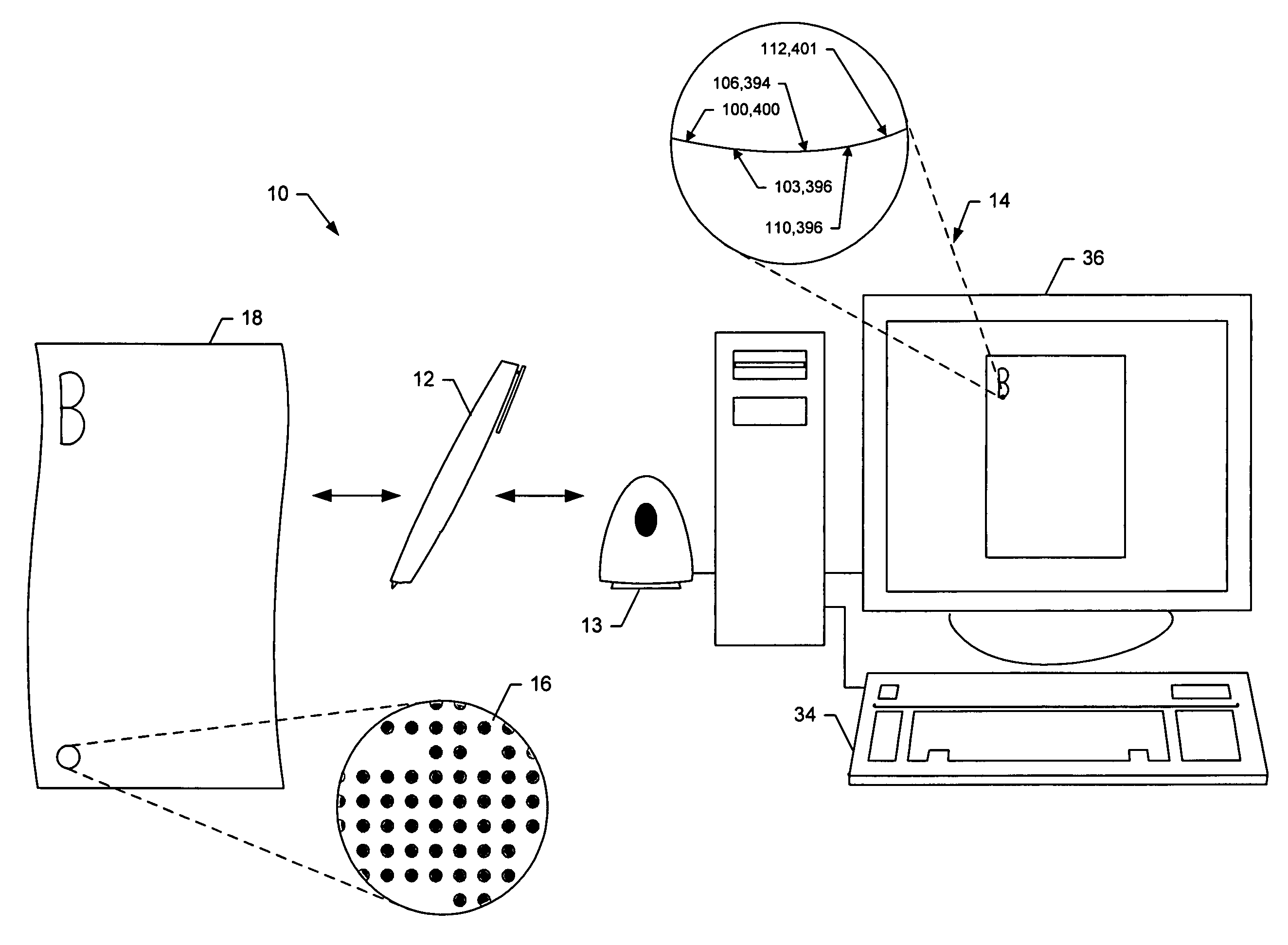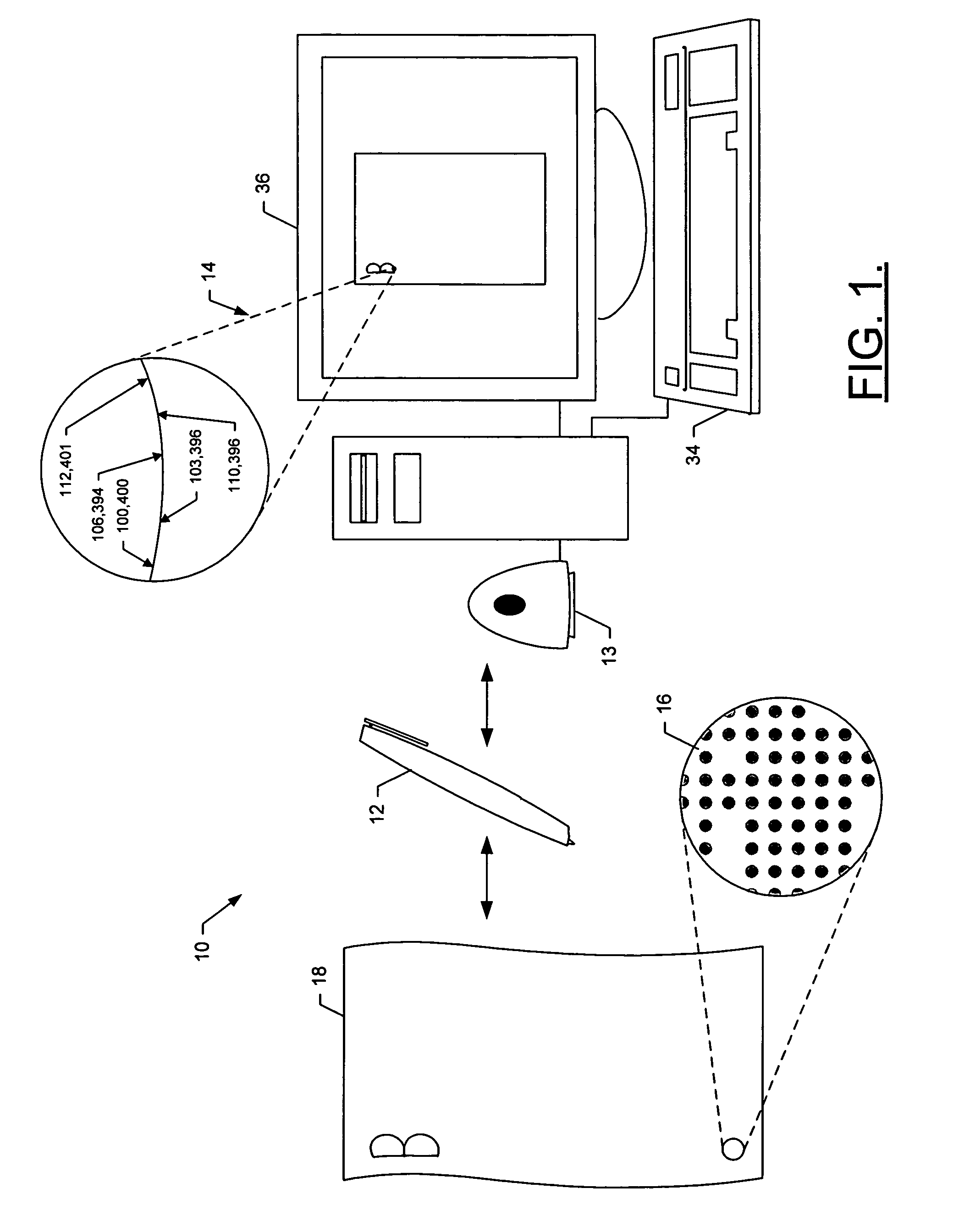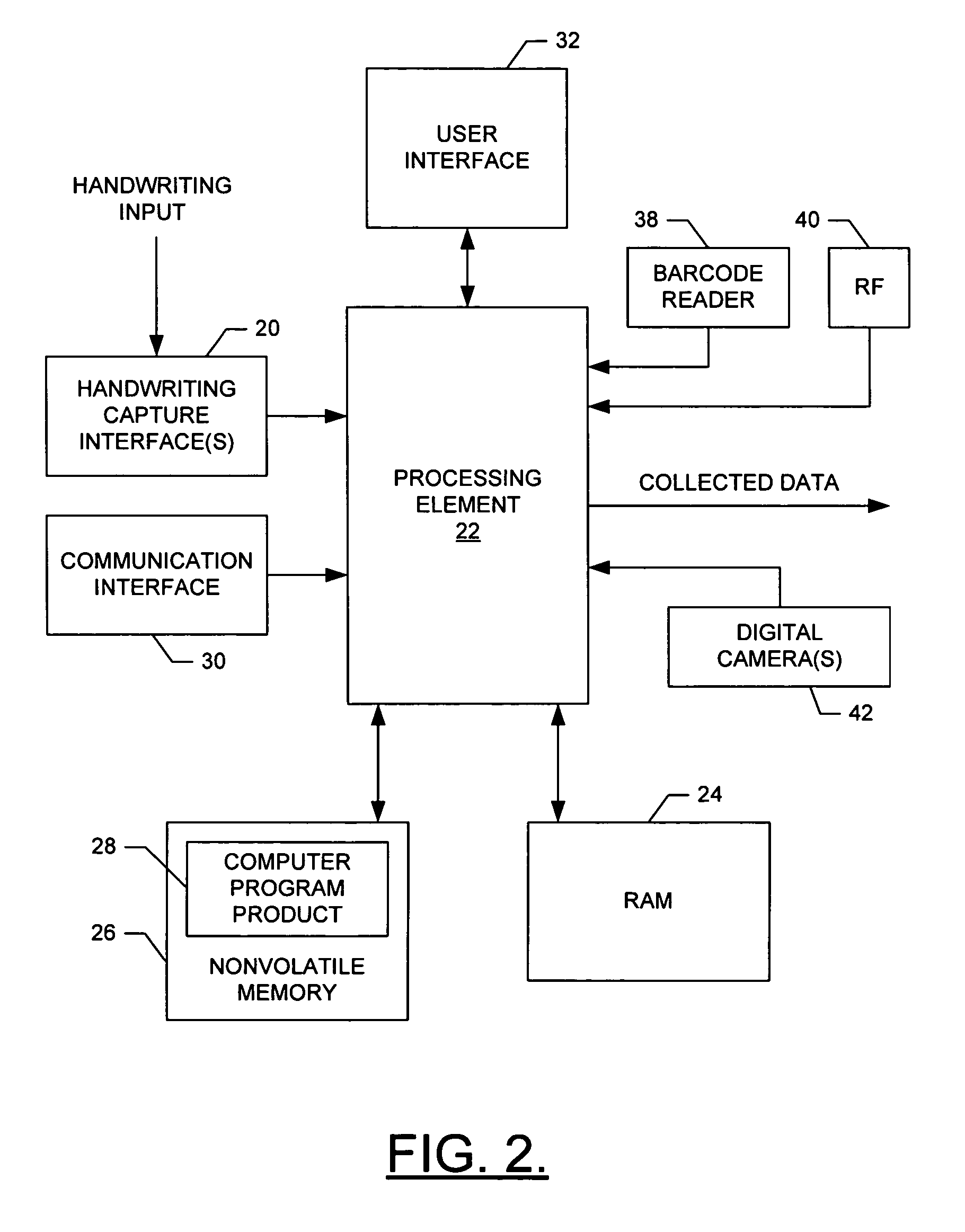System and method for associating handwritten information with one or more objects
a technology of handwritten information and associative methods, applied in the field of handwritten information processing, can solve the problems of inefficient use of the pen-enabled computing system, and achieve the effect of facilitating inspection of the resultant printed paper
- Summary
- Abstract
- Description
- Claims
- Application Information
AI Technical Summary
Benefits of technology
Problems solved by technology
Method used
Image
Examples
Embodiment Construction
[0033]The present invention now will be described more fully hereinafter with reference to the accompanying drawings, in which preferred embodiments of the invention are shown. This invention may, however, be embodied in many different forms and should not be construed as limited to the embodiments set forth herein; rather, these embodiments are provided so that this disclosure will be thorough and complete, and will fully convey the scope of the invention to those skilled in the art. Like numbers refer to like elements throughout.
[0034]The pen-enabled computing arrangement 10 of embodiments of the present invention can be embodied in a number of different manners. In one embodiment depicted in FIG. 1, however, the pen-enabled computing arrangement includes a writing stylus capable of interfacing with one or more computing systems, devices or the like, to capture handwritten information and thereafter processing the handwritten information as described hereinbelow. More particularly...
PUM
 Login to View More
Login to View More Abstract
Description
Claims
Application Information
 Login to View More
Login to View More - R&D
- Intellectual Property
- Life Sciences
- Materials
- Tech Scout
- Unparalleled Data Quality
- Higher Quality Content
- 60% Fewer Hallucinations
Browse by: Latest US Patents, China's latest patents, Technical Efficacy Thesaurus, Application Domain, Technology Topic, Popular Technical Reports.
© 2025 PatSnap. All rights reserved.Legal|Privacy policy|Modern Slavery Act Transparency Statement|Sitemap|About US| Contact US: help@patsnap.com



